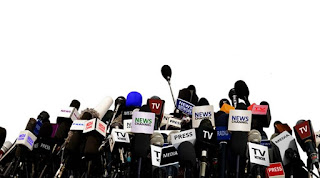'Solo', a movie review
*No Spoilers
I was waiting in anticipation to watch ‘Solo’. The posters, teasers, trailer and everything about the movie screamed style. It promised substance too. Solo is an anthology of 4 films – not something that we usually see on the Malayalam silver screen. Yes, 'Kerala café' and '5 Sundarikal' have done them before. But those movies had different lead actors and actresses in each story. Solo has Dulquer in all the lead roles.
I was waiting in anticipation to watch ‘Solo’. The posters, teasers, trailer and everything about the movie screamed style. It promised substance too. Solo is an anthology of 4 films – not something that we usually see on the Malayalam silver screen. Yes, 'Kerala café' and '5 Sundarikal' have done them before. But those movies had different lead actors and actresses in each story. Solo has Dulquer in all the lead roles.
What I loved about the movie is like
I mentioned before, the aesthetics about it. The whole presentation is so
stylish. Be it the introduction of 4 elements, the pace of storytelling and
Dulquer’s different appearances, there is a lot of class in the way the movie
is presented. The actor in Dulquer shines through all the 4 stories. One cannot
see any similarities in the 4 characters that he has played. If I were to
choose a favorite, loved the character of Shiva wherein there is hardly any
dialogue. This means that he had to convey all he had to say through his
expressions and he did it really well.
What I felt could have improved are
the below factors:
1. Better actresses: I really feel that
the movie should have had better lead actresses. I understand the business behind
it. One cannot get A-list heroines in an anthology of films. Having said that,
may be a little more effort could have been expended in finding better lead actresses.
2. All the stories were sad stories:
Personally, I am not a fan of sad stories. Please don’t get me wrong. I like
inspiring stories with a tinge of sadness about them. But, not stories that are
just sad. All the 4 stories were sad. Given that it is an anthology; it could
have had 4 ‘different’ stories – different in emotions at least. If sadness had
to be there as per the director’s vision, at least 2 of the stories could have
had an end that was uplifting.
3. Stories had similarities in the
plots: There were too many accidents and too may pregnancies. I could be wrong.
But I was expecting an anthology to have 4 different stories in every sense of
the word. If not vastly different from each other, at least no repetition in
the narration. There were multiple accidents which were pivotal to the stories
and the heroines were pregnant which was again pivotal to the stories. The
plots could have been different.
4. The issue with Rudra: I understand
that the director has a vision and it is his/her prerogative to treat the movie
as per the vision. For instance, in the first movie, there was a lot of
shuffling which is fine although it requires some effort on the part of the
audience to keep up. But in Rudra, there was a bit of incoherence. The scene
with Suhasini and Dulquer. Personally, I did not get it. I also did not
understand how what she said related to the context and the struggle Dulquer’s
character was going through. Even the climax scene was addressed to the groom’s
party. To me, it would have made sense if it were addressed to the leading
lady.
*Finally, I saw the part of Rudra when Solo came on Netflix. I do not know if it was an issue with the print I watched at the theater. The whole dialogue between Suhasini and Dulquer was cut. It was incoherent. And the climax suddenly showed Dulquer folding his hands to the groom. Now that I have seen the scene in entirety on Netflix, it makes sense.
*Finally, I saw the part of Rudra when Solo came on Netflix. I do not know if it was an issue with the print I watched at the theater. The whole dialogue between Suhasini and Dulquer was cut. It was incoherent. And the climax suddenly showed Dulquer folding his hands to the groom. Now that I have seen the scene in entirety on Netflix, it makes sense.
Having said all the above, ‘Solo’ is
a brave attempt. Appreciation and gratitude to Bejoy Nambiar & crew for
that. We should have more such movies on the Indian silver screen.













